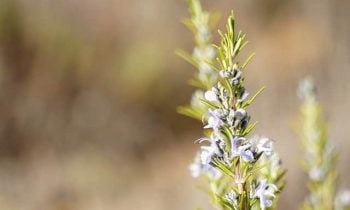Aromatherapy in Ancient Egypt and China
The ancient Egyptians were well known for their belief of an afterlife. Aromatherapy helped them practice this idea. You are probably aware of the Egyptian belief in mummification. They were certain that if a person’s body was kept intact, the spirit would be retained inside, and both spirit and body would awaken in the afterlife to enjoy a second life not ruled by earthly confines.
While Egyptians long held a belief that there was some type of existence past the physical here on earth, it wasn’t until an odd happenstance of luck played right into the hands of their beliefs. Around 2,700 BC, air free of humidity coupled with driving, dry sand, along with the fact that Egypt has little to no rainfall, to accidentally preserve some dead Egyptian bodies. This led 4th and 5th dynasty leaders to begin an intentional mummification process.
They believed nature had showed them how they could send their pharaohs and other important, wealthy Egyptians to the afterworld, with body intact. Myrrh and other essential oils still used today played an important part of the mummification process. This included Lemongrass, Frankincense, Juniper and Cardamom.
At the same time, more than 4,000 miles away in China, practitioners of Traditional Chinese Medicine (TCM) were using Sandalwood essential oil to treat conditions like cholera. Clove, Eucalyptus and Lavender essential oils were, and still are, a big part of TCM. Natural medicine practitioners in China were employing the healing powers of essential oils, while Egyptians believed they had mystical powers of reincarnation.
The Role of Aromatherapy and Essential Oils in the Middle Ages
Aromatherapy had been in wide practice for centuries before a Persian physician named Avicenna discovered how to distill the essence of plants. Before then, plants were usually mashed or crushed to get their oil, a very inefficient method. The distillation process Avicenna discovered is still used these days to get essential oils out of plants, roots, leaves and other natural plant components. A philosopher as well as a doctor, Avicenna recorded detailed and specific processes for removing the essence from different plants, and then used them for healing and spiritual practices.
The Muslim physician is regarded as the most influential of all the philosophers and scientists during the Middle Ages in the Islamic world. Aside from giving us the distillation process we use today for creating essential oils for use in aromatherapy, Avicenna understood the powerful healing combination of massage and natural, plant-based oils. He wrote several texts on what oils could be used to deliver what specific health benefits, as well as massage techniques.
During the Middle Ages in Europe, many knights returning home from the Crusades had been influenced by Avicenna’s followers. They brought home tales of amazing healing powers from natural oils. Plants and herbs began to be used to treat a number of mental and physical health problems. An essential oil which can be traced to biblical times, Frankincense was combined with Benzoin to make a balm called Friar’s Balsam, which could treat a number of both skin and respiratory system issues.
As the Middle Ages progressed across Europe, the use of essential oils and herbal remedies for medicine, cleaning and spiritual enhancement became widespread.
The Fortunate Lab Accident That Led to Essential Oil Treatment of Battlefield Injuries in World War I France
Lavender is known as one of the most versatile essential oils, and for good reason. It can be used for cleaning and mental health, to treat burns, scrapes and physical injuries, and can heal internal physiological processes. In the aromatherapist’s tool kit, there is always some Lavender essential oil. While this natural healing component had been used for hundreds of years previously on other continents, it was not well known for its restorative and mentally calming powers in France.
That would all change when a French scholar, chemist and part-time mad scientist named René Maurice Gattefosse burned his hand during a lab experiment. Probably chiding himself at the time for his mistake, this no doubt turned out to be a positive thing for French soldiers. As many people have done in the history of man when they burn themselves, Gattefosse looked around quickly for some cooling liquid in which to plunge his hand.
Immediately at his side he saw a vat of Lavender oil, and began to feel soothed physically and mentally the longer he left his hand immersed in the oil. He then treated the wound as one normally would, but was impressed at how fast it healed. He began to experiment with Lavender essential oil as a healing component for physical injuries, cuts and burns, because it also seemed to calm and soothe the mind simultaneously as the wound.
Anxious to spread the word about his discovery, Gattefosse began treating soldiers injured in World War I, and Lavender oil moved from military hospitals to conventional hospitals as an effective natural healer with no negative side-effects. He reported his studies in a scientific journal in 1928, where the term “aromatherapy” was used for the first time.
The Oldest Aromatherapy “Still” Ever Found?
We know through archaeological research and texts that aromatherapy has been around for a long time. This practice of taking the essence of plants and using it for mind and body wellness in humans is certainly not new. Even so, the discovery of what is probably the oldest aromatherapy distilling machine ever discovered gives us a concrete idea of how long people have been benefiting from essential oils.
Distillation is a process used to obtain the oil essence of plants, leaves, bark, trees and other plant-based components and turn it into a usable liquid. Muslim physician and philosopher Avicenna was widely believed to be the father of essential oil distillation in the middle ages. However, an archaeological discovery in 2005 is setting back the use of distillation several centuries.
A clay still, for lack of a better term, was discovered by archaeologists in the Republic of Cyprus, east of the Mediterranean Sea. There were several bowls that were found at the same dig site. Those bowls were tested chemically and found to contain distilled Lavender, Rosemary and other essential oil products. The artifacts were found to be about 4,000 years old.
Distillation is still used today to create essential oils, because it is such an effective process and it does not damage the strength of the oil which is pulled from the plant. To think that this process was used so long ago in Cyprus tells us that our ancestors knew very well the healing power of nature, as well as the practice of aromatherapy.
The History of Aromatherapy in The Western World
Aromatherapy is the practice of using essential oils taken from nature for topical and aromatic applications, in order to derive specific health benefits. Thought to begin in India and China, working its way westward through Egypt to Europe and finally the Western world, the practice has been around for somewhere between 5,000 and 6,000 years.
Like many ancient medicinal practices, the United States and the rest of the Western world were the last to jump on this natural healing bandwagon. It hasn’t been until the late 20th and early 21st centuries that conventional doctors and other medical professionals have openly begun to preach the effectiveness of this nature-based healing practice.
However, the basics of aromatherapy have been used in Western civilizations for centuries. The Greek physician Pedacius Dioscorides wrote a medical text called Materia Media around 70 AD. The five-volume tome was printed and distributed in Latin, Arabic and Greek, and for the next 1,200 years it served as the standard medical guide for the Western world. Materia Media was a book about herbal medicine that contained many essential oil healing recipes still used today by aromatherapists.
Hallmarked by Christopher Columbus’ arrival in North America in 1492, the Spanish Empire expanded throughout Central America, North America, South America and the Caribbean islands. They discovered natives using natural healing oils, herbs and spices, and copied these practices. Their adoption of those natural medicines was largely responsible for the spread of today’s modern aromatherapy practice across Western societies.


 Gift Giving Guidelines
Gift Giving Guidelines 6 of the Most Popular Essential Oils and What They Can Do for Your Health
6 of the Most Popular Essential Oils and What They Can Do for Your Health 7 Essential Oils for Energy
7 Essential Oils for Energy